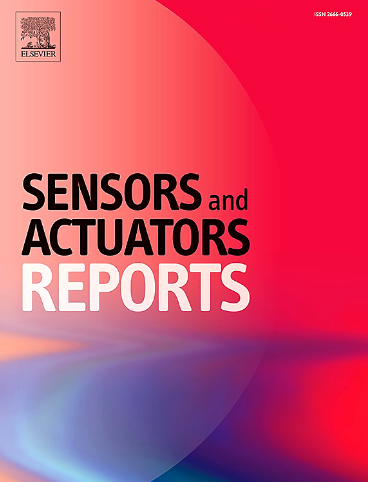Enhancing nitrous oxide chemiresistive sensing performance by reducing ionic Oxygen species adsorption in Gold functionalized Tungsten Trioxide nanofibers
IF 6.5
Q1 BIOTECHNOLOGY & APPLIED MICROBIOLOGY
引用次数: 0
Abstract
Low-cost nitrous oxide (N2O) gas sensor is in great need to provide real-time information to various stakeholders. Herein, various gold functionalized tungsten trioxide nanofibers (Au-WO3 NFs) with different composition and crystallinity were synthesized by controlling electrospinning solutions and post heat treatment. These sensing materials were systematically exposed to various N2O concentrations at different operating temperatures (i.e., 250 to 450 °C). Among different samples, 1 at % gold functionalized WO3 nanofibers (1 at % Au-WO3 NF) annealed at 600 °C for 24 h shows the highest sensitivity (S = Ra/Ro) of 38.5 toward 100 ppm at 250 °C with experimentally determined limit of detection (LOD) at 2.5 ppm. Although recovery and recovery time improved, the sensitivity reduced with an increase in operating temperatures. The detailed sensing mechanism studies indicated that the high N2O sensing was achieved when there were limited adsorbed ionized oxygen species (e.g., O-). Moreover, N2O adsorption and desorption activation energy were estimated to be 0.13 and 0.87 eV where desorption was more strongly temperature dependent than adsorption.
通过减少金功能化三氧化钨纳米纤维中的离子氧吸附,提高氧化亚氮化学电阻传感性能
低成本的一氧化二氮(N2O)气体传感器非常需要为各利益相关方提供实时信息。本文通过控制电纺丝溶液和后热处理合成了各种不同成分和结晶度的金功能化三氧化钨纳米纤维(Au-WO3 NFs)。这些传感材料在不同的工作温度(即 250 至 450 °C)下系统地暴露于不同浓度的一氧化二氮中。在不同的样品中,1% 的金功能化 WO3 纳米纤维(1% 的 Au-WO3 NF)在 600 °C 下退火 24 小时后显示出最高的灵敏度(S = Ra/Ro),在 250 °C 下对 100 ppm 的灵敏度为 38.5,实验确定的检测限(LOD)为 2.5 ppm。虽然回收率和回收时间有所提高,但灵敏度却随着工作温度的升高而降低。详细的传感机理研究表明,当吸附的电离氧物种(如 O-)有限时,就能实现对 N2O 的高度传感。此外,N2O 的吸附和解吸活化能估计分别为 0.13 和 0.87 eV,其中解吸比吸附更依赖于温度。
本文章由计算机程序翻译,如有差异,请以英文原文为准。
求助全文
约1分钟内获得全文
求助全文
来源期刊

Sensors and Actuators Reports
Multiple-
CiteScore
9.60
自引率
0.00%
发文量
60
审稿时长
49 days
期刊介绍:
Sensors and Actuators Reports is a peer-reviewed open access journal launched out from the Sensors and Actuators journal family. Sensors and Actuators Reports is dedicated to publishing new and original works in the field of all type of sensors and actuators, including bio-, chemical-, physical-, and nano- sensors and actuators, which demonstrates significant progress beyond the current state of the art. The journal regularly publishes original research papers, reviews, and short communications.
For research papers and short communications, the journal aims to publish the new and original work supported by experimental results and as such purely theoretical works are not accepted.
 求助内容:
求助内容: 应助结果提醒方式:
应助结果提醒方式:


